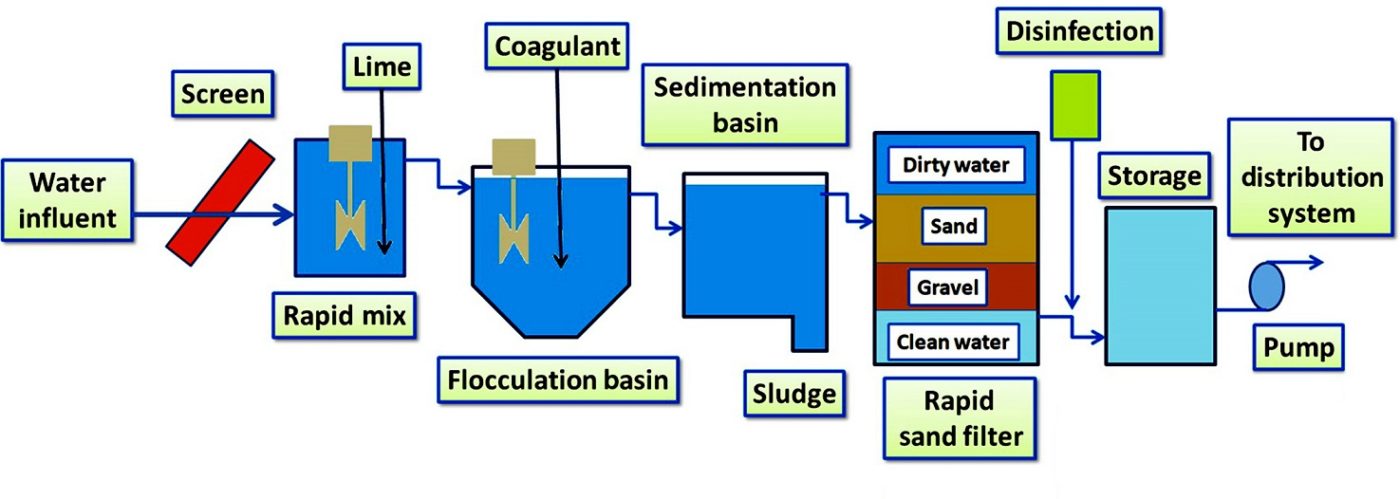Residential Water Treatment System for Beginners
Table of ContentsThe 5-Minute Rule for Residential Water Treatment SystemThe Ultimate Guide To Residential Water Treatment SystemGetting The Residential Water Treatment System To Work10 Simple Techniques For Residential Water Treatment System

on the other hand, originates from production, industrial and also business activities brought as well as has a totally different structure than sewer water. How does it work? The initial step in this water therapy plant is that the wastewater drains to the plant with the assistance of gravity with the primary sewer system.
In this stage, the water relocates through the crushed rock chamber to get rid of any grit. The water after that moves to the bar displays which eliminate big things.
This is then eliminated from the tank and also disposed of at the dump. Following comes the sedimentation phase, also called the primary therapy. In this phase, the water moves to the key settling storage tanks, also called pre-settling basins. These tanks have receptacles which are located in the base of the storage tank where water moves with.
The 10-Minute Rule for Residential Water Treatment System
These working out tanks allow the sludge to work out and after that transfers to food digestion containers. In the food digestion tanks, the sludge is warmed and also combined. Another vital thing that occurs here is the manufacturing of biogas, which the wastewater treatment plants can recycle, in the manufacturing of electric or thermal power which is an additional massive benefit to the environment.

The last step in wastewater therapy is assessment. This evaluation involves inspecting the contamination degree of the water dealt with and also making certain it complies with the highest requirements in order to be launched or reused for domestic or industrial purposes. residential water treatment system. Applications: A lot of petroleum refineries or petrochemical as well as chemical sectors produce a huge amount of wastewater as well as call for on-site wastewater therapy plants.
The wastewater right here flows via screens and into settlement basins that can get particles in huge quantities. It serves as a pre-treatment as mentioned over as it occurs prior More Bonuses to 3 more aggressive stages- primary, secondary and also tertiary therapy. Primary Therapy Throughout this phase, the wastewater relocates right into the clarifiers.
Excitement About Residential Water Treatment System
It is the design of these tanks that result in working out, that is, the natural solid matter accumulates at the end of the tank while the lighter matter drifts to the leading ending up being easier for removal. The natural issue that resolves near the bottom is called a key sludge blanket.
Second Therapy This therapy stage contains cardiovascular oygenation. Oygenation basins have aerators, these have a system of pipes or tubes connected to them. that site They are made from ceramic or rubber membrane layers that have tiny holes in them for air to pass through. When this air flows with the aerators, the little openings existing, transform them into bubbles and they obtain mixed with the water column.
This RAS goes back into the primary clarification tank and also the germs in it helps in damaging down any raw material in the sewer. When RAS has totally undergone both the key and also secondary information basins constantly, i. e numerous times, it is turned into waste-activated sludge (WAS). The WAS then does not return to the primary information container yet rather relocates to the covered containers, also called cardio sludge digesters.
Ultimately, the staying sludge relocate to the dewatering facility that contains dewatering containers where the plant makes use of belt presses to squeeze any remaining water out of the sludge. Tertiary Therapy Tertiary treatment follows the procedure of both main and also additional procedures yet also in addition includes mechanical and also photochemical processes.
Getting My Residential Water Treatment System To Work
Right here the focus is offered to physical strategies such as screening, sedimentation, purification, information etc. The goal of this is to remove as much solid physical matters as feasible before sending out the effluent for more treatment. This phase entails the elimination of solid waste and organic matter. Here chemicals are included to break down any strong and chemical waste.
There are two kinds of materials- one is an anion one while the other is a cation one. These previous resins release hydroxyl ions which are adversely billed while the cation resins release hydrogen ions that are positively billed. The cation-exchange resins bring about softening of water, the anion-exchange lead to the elimination of nitrate from wastewater and the combination of both the anion and cation exchange eliminates essentially every ionic pollutant existing in the feed water with a procedure called deionization (residential water treatment system).
Applications: Demineralization brings about the complete elimination of minerals from the water and is normally used in markets that call for water with high levels of purity, for instance- makeup or feed water in high-pressure central heating boilers, the food and beverage market, and also process streams used in the manufacturing of electronics. They are additionally made use of in markets for the generation of heavy steam, power as well as cooling.
Reverse Osmosis (RO) Water Therapy The concept of reverse osmosis (RO) operates on the filtering approach that results in the removal of a multitude of contaminants and pollutants from wastewater by applying stress to it when it gets on one side of a membrane. How does it work? This water therapy plant works by using a high-pressure pump that boosts the stress on the salt side this hyperlink of the RO and compels the water throughout the semipermeable RO membrane (which permits some atoms and molecules to pass however not others), leaving virtually 95%-99% of liquified salts in the deny stream.